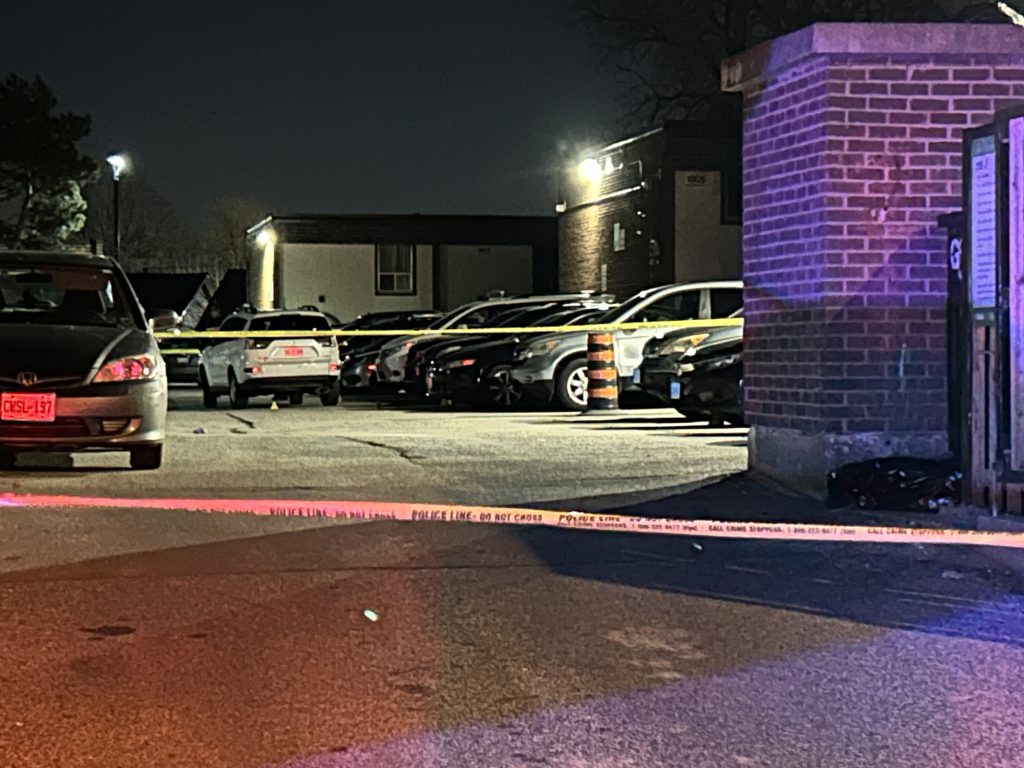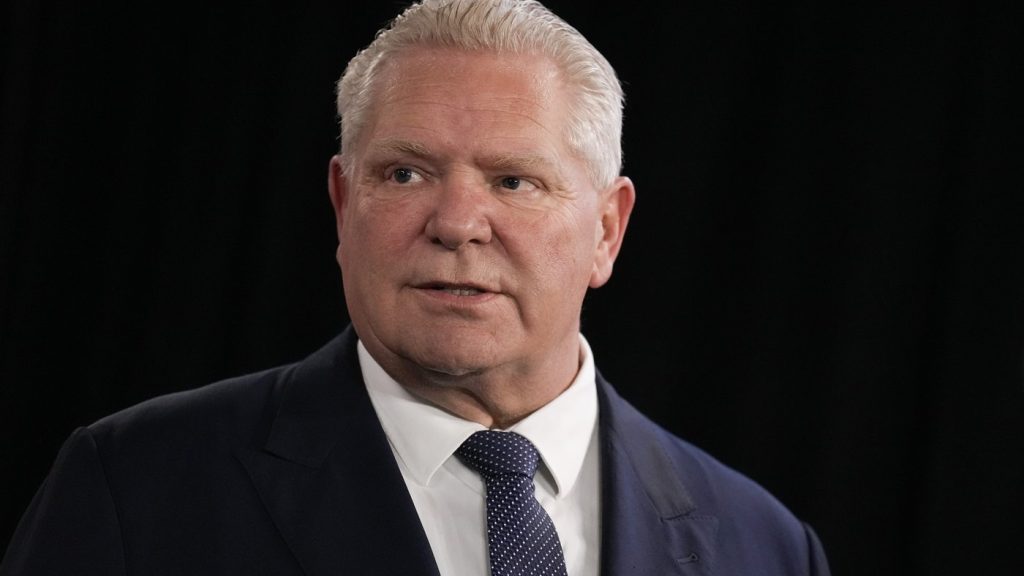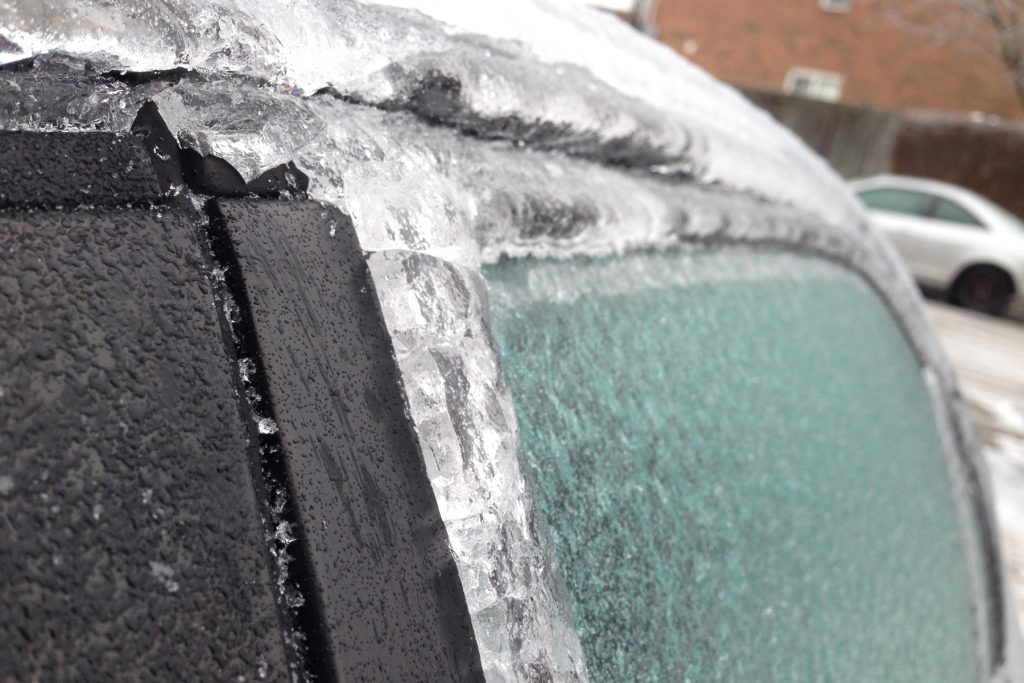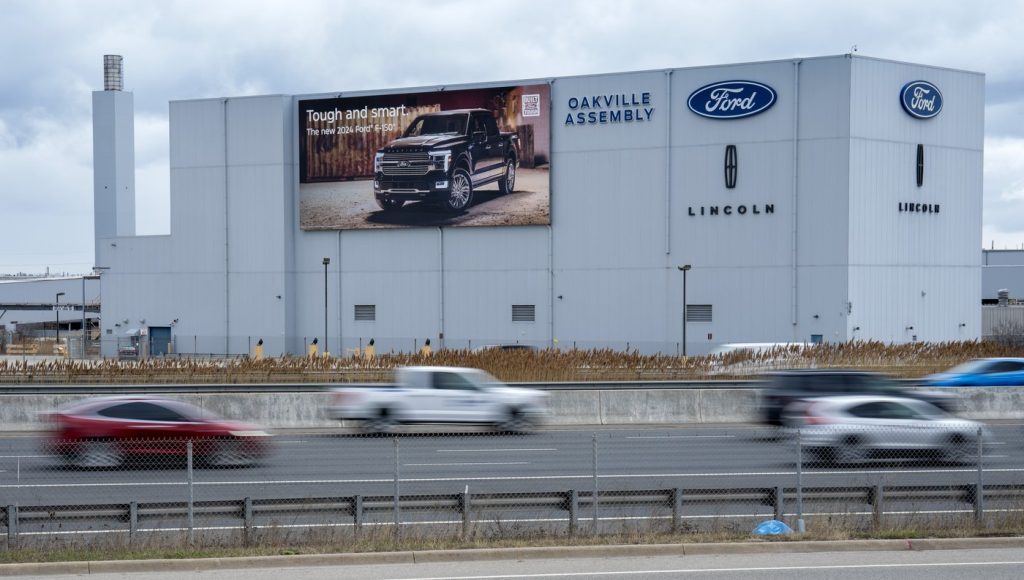Ontario election 2022: How will the parties address gridlock and improve transit?

Posted May 19, 2022 6:27 pm.
Last Updated May 20, 2022 2:18 am.
As the leaders continue their Ontario election campaigns across the province, their tours might have to contend with busier roads as we continue to recover from the pandemic.
While all major provincial parties share similarities in terms of proposals to improve public transportation, especially when it comes to GO Transit, there is one key difference this election: Highway 413 and other large-scale highway projects.
“Transportation has turned out to be an important part of this election campaign in part because it’s being used as a critical wedge issue primarily around the future role of the car,” Matti Siemiatycki, a geography professor and the director of the Infrastructure Institute at the University of Toronto, told CityNews.
“In terms of transportation, the choice is clear between a view of… an auto-based recovery from the pandemic and one that’s focused much more on public transit and active transportation.
“Transportation has really emerged as a key area and I think it’s because of how much it touches on different aspects of people’s lives. It touches on the time in their day, it touches on the environment, it touches on affordability and most critically it’s a key issue in the suburbs around Toronto which are the main voting area where elections are won and lost in Ontario.”
RELATED: Top 6 Ontario election themes and how parties commit to addressing the issues
During Monday’s leaders’ debate, Ontario NDP leader Andrea Horwath, Ontario Liberal Party leader Steven Del Duca and Green Party of Ontario leader Mike Schreiner all took aim at Progressive Conservative Party of Ontario leader Doug Ford over the proposed Highway 413.
The highway would connect Highway 400 in York Region to Highway 407 in Oakville.
“The $10 billion for Highway 413 is fiscally irresponsible, it’s a climate disaster, and it will pave over 2,000 acres of farmland,” Schreiner said.
“The 413 is the wrong thing to do. It paves over farmland, it paves over the greenbelt, and it takes chunks out of the Holland Marsh. What we don’t need is massive highways to mansions nobody can afford,” Horwath added.
“Your money, my money, Ontario’s money that’s going to be spent recklessly if Doug Ford and his team have their way. It’s not going to help you at all. It’s actually going to make some of his richest political donors even richer,” Del Duca charged.
In his response, Ford pointed to his party’s plan to expand highways and the need to tackle gridlock.
“The question is it’s costing us tens of billions of dollars a year being stuck in traffic,” he said.

When it comes to transit and transportation, there has been a shift in focus over the past decade. Siemiatycki said in the 1990s and the early 2000s there was more of an emphasis on lowering debt and keeping spending in check.
“Transportation has emerged as one of those issues that are both tangible and very symbolic as we go into this election,” he said, going on to question how all of the investments will be paid for.
“Not just in their capital period, but over their long-term operating and that’s also something that voters will need to address in this election.
“That viewpoint as we come out of the pandemic is almost lost on the political spectrum. You hear very little articulation of a view about spending and what’s happened is Doug Ford has picked up on that too.”
Siemiatycki said the Ontario PC Party seems to be running on a “more everything” type of platform.
“More money for roads, more money for public transit, but also significant cuts to revenues (road tolls on Highways 412 and 418, licence plate stickers) and the cost of motoring,” he said, going on to praise the party for spending $1.6 billion on the early works needed to electrify and expand the GO Transit rail network.
“It’s a staggering amount of money (to do the full electrification) and it’s going to overhaul the public transit network. This is a huge expansion that is overdue.”
RELATED: How you can vote, what’s new, and COVID measures
However, Siemiatycki questioned pursuing mega highway projects like Highway 413.
“The highway expansion proposals will have a major impact on this region I think for generations to come. I think they’ll fuel urban sprawl, I think they’ll create more pollution, they’ll exacerbate congestion and so this really is an important election issue around the future role of highway expansion,” he said.
When it comes to the Ontario NDP’s transportation platform, Siemiatycki said the party has a long and detailed transit plan and makes a recognition that bus service needs to be expanded. But he said the proposed policies haven’t been widely articulated.
“This policy while it’s detailed, it’s had trouble cutting through the noise of an election campaign,” he said.
Turning to the Ontario Liberal Party’s platform, Siemiatycki said the party’s temporary buck-a-ride provincewide transit policy has generated a lot of discussion.
“(The) buck-a-ride policy is gimmicky. It seems designed to grab attention, to cut through the noise, to get people thinking about the Liberals after a real down election in 2018, and it’s meant for its simplicity and perhaps its symmetry with the Conservatives’ buck-a-beer policy,” he said, adding analysts have suggested it would cost more than what the party said it would.
“It may be a good soundbite, but it really remains to be seen how much it’s going to cost.”
Lastly, Siemiatycki said the Green Party of Ontario’s transportation platform is lengthy and detailed but said it too hasn’t been widely articulated.
“I think it will resonate with close watchers of the transportation system. In terms of how it captures the imagination and really connects with the electorate, that remains to be seen,” he said.
Siemiatycki said the emphasis on electrification and dedicated bus lanes are favourable, especially because of the slow rollout of those types of lanes in the Greater Toronto and Hamilton Area. He went on to say dedicated bus lanes should be utilized by municipalities more.
Transportation and infrastructure party platform highlights
Here are highlights of what the four major parties — the Progressive Conservative Party of Ontario, the Ontario NDP, the Ontario Liberal Party and the Green Party of Ontario — are committing to after the June 2 vote.
These highlights were taken from platforms posted online by the Ontario NDP, the Ontario Liberal Party and the Green Party of Ontario. Many of the Ontario PC Party highlights were taken from the budget tabled just before the legislature was dissolved for the Ontario election campaign as the party’s website pointed to that document versus a separate, detailed election platform.
The parties included in this list all had at least one MPP elected in the 2018 Ontario election under each party banner and the order of the parties is based on the descending order of total MPPs in each caucus at the time the legislature was dissolved.
Ontario PC Party
- Spend $25.1 billion over 10 years for planning and/or construction of highway expansion or rehabilitation projects across Ontario, including plans to build Highway 413 across Halton, Peel and York regions and the Bradford Bypass connecting Highways 400 and 404
- Spend $61.6 billion over 10 years on public transit projects such as building the Ontario Line, Scarborough and Yonge North subway extensions, Eglinton Crosstown West LRT extension, restoration of Ontario Northlander Timmins-Toronto train service
- As part of transit spending, “transforming” GO Transit with electrification and increased service along with expanding service to Bowmanville and increasing Toronto-London rail service
- Continue with work to build road infrastructure to the Ring of Fire
- Continue with pre-election elimination of tolls on Highways 412 and 418, licence plate sticker fees
Ontario NDP
- Cancel Highway 413 and Bradford Bypass
- Restore provincial funding for transit operating costs to 50 per cent net costs
- Implement a 10-minute-or-better service guarantee for TTC, adding wi-fi on subways
- Implement two-hour, flat-rate fare across Greater Toronto and Hamilton Area municipal transit, transfer to and from GO Transit at no extra cost
- Transition winter road maintenance back to the public sector
- Improve all-day two-way GO train service between Kitchener-Waterloo and Toronto, expand year-round daily-or-better service to Bowmanville, Grimsby and Niagara
- Extend Hurontario LRT (to be called Hazel McCallion LRT on completion) to downtown Brampton, restore the downtown loop
- Make Metrolinx more transparent and accountable, more public involvement at board meetings and at all stages during key decisions, and add municipal participation to the board
- Upgrade Highway 11/17, Highway 69, expand Highway 7
- Fully restore the Northlander passenger rail service, support Huron Central and Algoma Central rail lines
Ontario Liberal Party
- Cancel Highway 413 project, use $10 billion from that toward building new schools
- Provide subsidies to public transit providers (including GO Transit, Ontario Northland) in order to temporarily cut transit fares to $1 a ride and monthly passes capped at $40
- Extend Eglinton Crosstown LRT east to UTSC and Malvern
- Expand GO train service to Bowmanville, electrify and expand GO train network in Greater Toronto and Hamilton Area
- Extend Hurontario LRT to Brampton GO station
- Provide $375 million in extra operating funding for transit providers
- Fare-free transit for veterans
- Ensure the completion of several northern highway projects, including the four-laning of highways 69 and 11/7 between Thunder Bay and Nipigon, and the reconstruction of Highway 101 in Timmins
- Introduce a refundable tax credit of $75 per winter tire and $100 per studded tire in northern Ontario
- Restore service on the Northlander rail line from Toronto to North Bay within two years and plan for passenger rail further north, including extending the Polar Bear Express south to Timmins
- Construct new roads to access the Ring of Fire
- Give northern municipalities a rebate of five per cent of the provincial mining tax
Green Party of Ontario
- Cancel Highway 413, Bradford Bypass and Highway 417 widening
- Create dedicated truck lanes on Highway 407 to reduce congestion, help with goods movement
- Cut all public transit (including GO Transit and Ontario Northland) fares in half for at least 3 months
- Restore 50-per-cent provincial funding for transit operations
- Electrify Ontario’s transit system and add 4,000 electric and fuel-cell buses by 2030
- Triple number of dedicated bus lanes by 2025
- Expand all-day, two-way GO service to every 15 minutes at peak and 30 minutes during off-peak hours and weekends
- Fully fund Northlander passenger train service
- Require bike storage and e-bike charging at all multi-unit buildings, surface parking lots, government buildings








